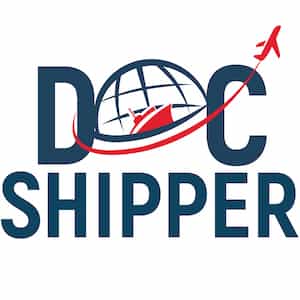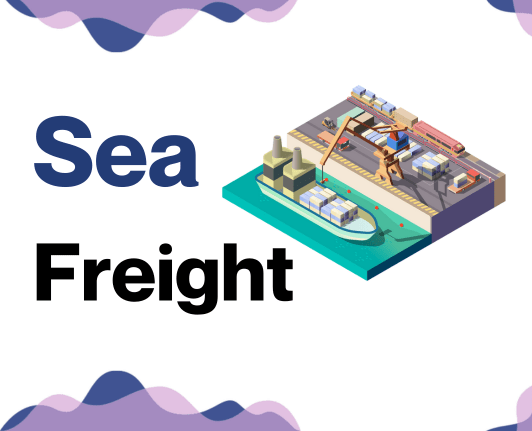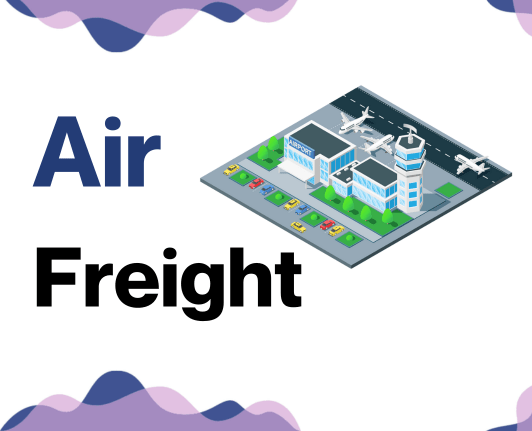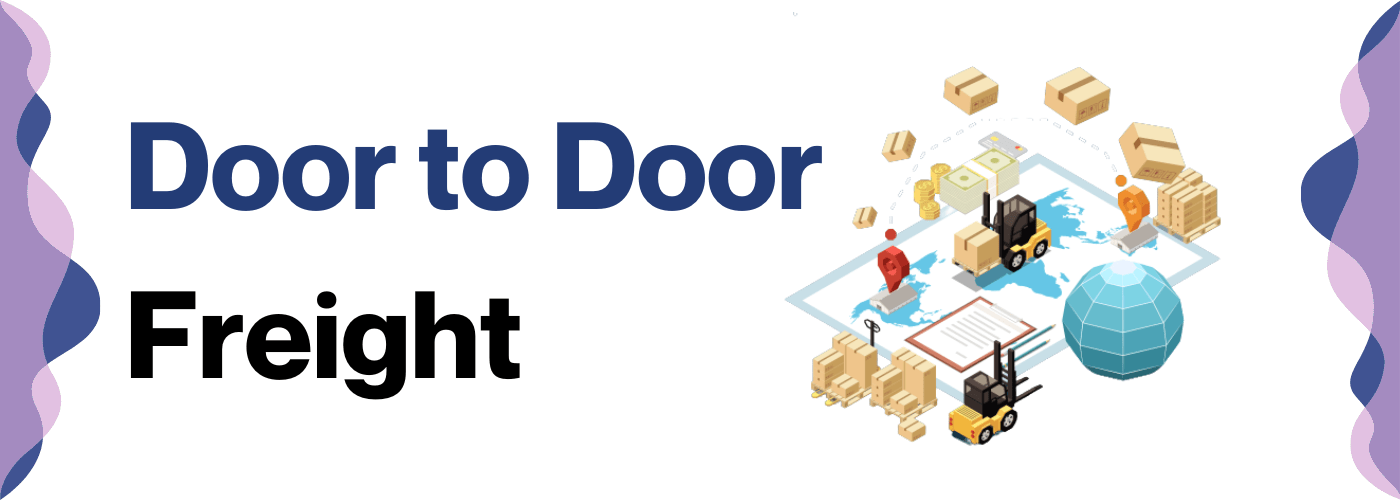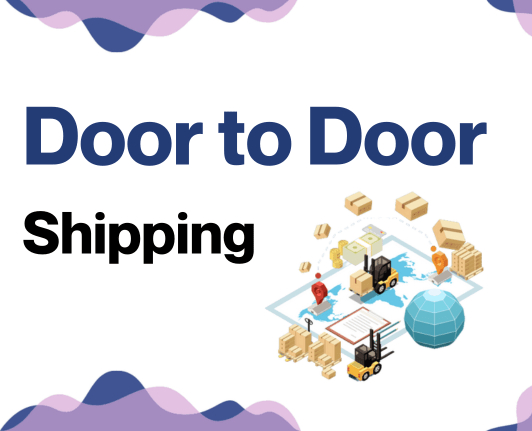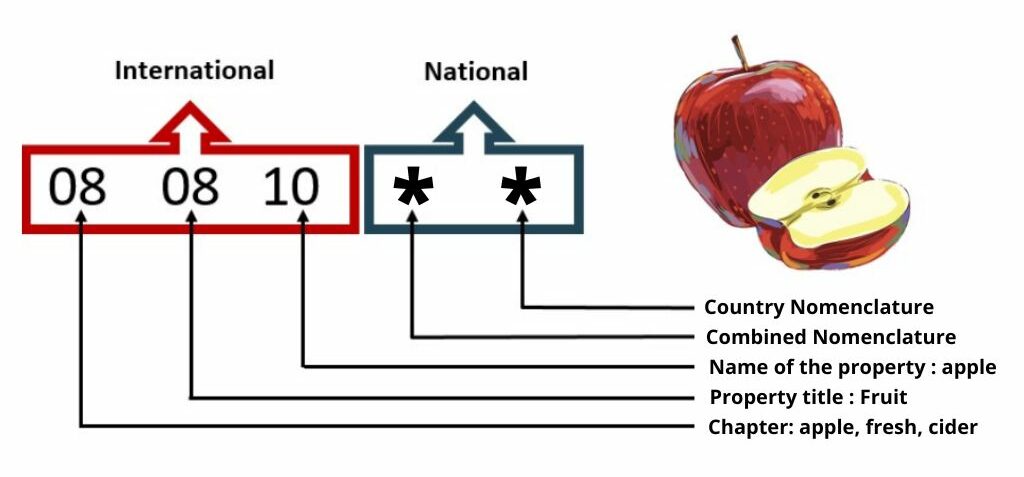Well, wouldn't it be a delightful world if shipments moved as quickly as the local Teh Tarik pulling tea right into your cup? Unfortunately, the reality of freight transport between Malaysia and Pakistan involves a slightly steeper learning curve.
It's all about grappling with fluctuating rates, deciphering transit times, and wrapping your head around complex customs regulations. However, losing sleep over these complexities can be avoided! This guide will navigate you through your shipping journey from Malaysia to Pakistan, breaking down the ins and outs of the different freight options available - be it air, sea, road or rail – for your business needs.
We detail the customs clearance process, provide critical information on duties, taxes, and offer tailored advice to ensure your business doesn't miss a stride. If the process still feels overwhelming, let DocShipper handle it for you! As an international freight forwarder, we master every step of the shipping process, turning potential challenges into triumphant success for businesses.
Table of Contents
Which are the different modes of transportation between Malaysia and Pakistan?
Shipping goods from Malaysia to Pakistan? Your transport choice matters! Typically, air freight is fast but costly, while shipping via sea is pocket-friendly but slower.
Our geographical math here – 4,070 km over land, across several borders, versus 3,474 km over water - hints that using the sea might be the better, more practical bet.
It's like deciding between taking the bus or your own car during peak hours - with the bus being the ship, taking its measured time but always delivering. Understanding this choice can help your business dodge unwanted costs and delays, making your logistics smooth sailing.
How can DocShipper help?
Are you looking to ship goods between Malaysia and Pakistan? Let DocShipper simplify the process for you. From organising transport to handling customs, we're here for your every need. Benefit from our expertise, quick services and 24/7 support. Don't get overwhelmed, let us handle it. Want to know more? Reach out for a free estimate within 24 hours or make a free call to our consultants.
DocShipper Tip: Sea freight might be the best solution for you if:
- You're dealing with hefty quantities or oversized goods. Sea transport is your go-to for maximizing space without stretching your budget.
- Time sensitivity isn't a concern for your shipment. Ocean freight is known for its leisurely pace, especially when compared to the speed of air or rail.
- Your supply chain connects key international harbors. This positions you to take full advantage of a wide-reaching network of ocean trade routes.
Sea freight between Malaysia and Pakistan
Trade between Malaysia and Pakistan is a busy channel, buzzing with activity. Picture a highway that's bustling with trucks carrying goods – that's what the ocean route connecting ports like Port Klang in Malaysia and Karachi Port in Pakistan looks like. Extensively used for transporting high-volume goods, this sea route is a cost-effective yet slow solution. It's a little like taking the scenic route on a road trip - it may take longer, but it's easy on the pocket.
Now, imagine you're a new driver fumbling with the gears and controls - that's how many businesses feel when initiating cross-border shipments. Yes, navigating the labyrinthine networks and countless regulations can feel overwhelming. But don't fret! This Destination Guide section will be your GPS, taking you through the best practices and specific rules on shipping between Malaysia and Pakistan. So buckle up for the journey, and let's tackle those shipping hiccups together!
Main shipping ports in Malaysia
Port of Klang
Location and Volume: Located in the Selangor district, it's Malaysia's busiest port and ranks 12th globally in terms of shipping volume. Handling around 14.06 million TEUs in 2023, it caters to shippers in the domestic and international markets.
Key Trading Partners and Strategic Importance: The Port of Klang has the US, China, Singapore, Japan, and India as top trading partners and serves as a significant link to global trade lanes.
Context for Businesses: Are you seeking efficient connections to major markets? The Port of Klang offers high-frequency services to over 500 ports globally, making it ideal for businesses aiming for expansive market reach.
Port of Tanjung Pelepas
Location and Volume: Located in Johor, adjacent to the eastern mouth of the Straits of Malacca, this port handled 10.48 million TEUs in 2023, establishing its importance in the regional trade.
Key Trading Partners and Strategic Importance: Tanjung Pelepas connects Malaysia with prominent trading locations like China, Hong Kong, and the US.
Context for Businesses: If your strategy involves serving Asia-Pacific markets, consider utilizing the Port of Tanjung Pelepas for its strategic location, making it ideal for transshipping goods to the region.
Port of Johor (Pasir Gudang)
Location and Volume: The Johor Port, also known as Pasir Gudang, is located in the southern part of Peninsular Malaysia and moved approximately 1.45 million TEUs per annum.
Key Trading Partners and Strategic Importance: This port's main trading partners include Indonesia, Thailand, and China. It's strategically important for the distribution of palm oil, rubber, and cocoa.
Context for Businesses: If your business mainly deals with goods like palm oil or rubber, Johor Port's specialized terminals could provide practical shipping solutions.
Penang Port
Location and Volume: Situated at the northern part of Peninsular Malaysia, Penang Port is a medium-sized facility that moved approximately 2.2 million metric tonnes in 2022.
Key Trading Partners and Strategic Importance: The port primarily trades with China along with other key partners such as Singapore, the US, and Japan.
Context for Businesses: Looking to ship electronics or electronic-related goods? Penang Port, dubbed as the 'Silicon Valley of the East', has strong infrastructural support for these types of cargo.
Port of Bintulu
Location and Volume: Based in Sarawak, Eastern Malaysia, Bintulu is a smaller port but critical for its handling of liquefied natural gas. In 2023, it handled 12.443 million tonnes.
Key Trading Partners and Strategic Importance: The port's main trading partners include Japan, Korea, and Taiwan, primarily in the LNG sector.
Context for Businesses: If your business transports LNG or other similar goods, the Port of Bintulu should be a primary consideration due to its specialized LNG facilities.
Port of Kuantan
Location and Volume: Located on the East Coast of Peninsular Malaysia, Port Kuantan is a smaller but emerging port that handled over 24 million tons of cargo in 2022.
Key Trading Partners and Strategic Importance: Key trading partners include China, due to its participation in the ambitious Belt and Road Initiative that promotes regional connectivity.
Context for Businesses: If you're seeking entry into the Chinese markets via a less-congested port, Kuantan Port is worth considering. It is set to become an increasingly important player in the regional logistics landscape.
Main shipping ports in Pakistan
Port of Karachi
Location and Volume: Situated on the Arabian Sea, it's Pakistan's busiest port, handling about 60% of the nation's cargo 25.1 million tons. Notable for its large volume and strategic location, it's crucial to the global trading system.
Key Trading Partners and Strategic Importance: Main trade partners include UAE, the USA, China, and Singapore. Providing essential routes for Afghan Transit Trade, it holds vast strategic and economic importance for South Asia.
Context for Businesses: Looking to connect with major global markets? The Port of Karachi can be fundamental to your shipping strategy as it’s well-connected and operates round the clock, offering maximum flexibility
Gwadar Port
Location and Volume: Found on the southwestern Pakistani coast near Iran, and overseen by China, it's a growing port hoping to rival Dubai. A part of the China-Pakistan Economic Corridor CPEC, it plans to process millions of tons of freight in the coming years.
Key Trading Partners and Strategic Importance: Main partners include China, UAE, and other countries part of the Belt and Road Initiative. It's a key port expected to play a central role in evolving regional trade dynamics.
Context for Businesses: Expanding into the Asian markets? Gwadar Port, with its increasing centrality in the Belt and Road Initiative, could provide engaging opportunities to link markets in the Middle East, Africa, and beyond.
Port Bin Qasim
Location and Volume: Located 35km southeast of Karachi, it's a hub for industrial activity, handling about 39% of Pakistan's cargo 17.17 million tons.
Key Trading Partners and Strategic Importance: Major trade partners include UAE, China, Saudi Arabia, and USA. It hosts two power plants and is integral to national energy infrastructure.
Context for Businesses: If you're in energy or heavy industry, Port Bin Qasim provides a robust logistics solution due to its well-equipped infrastructure and proximity to industrial complexes.
Port of Qasim
Location and Volume: This deep-water port on the Arabian Sea handles about 40% of Pakistan's cargo 18.99 million tons and is located 50km south of Karachi.
Key Trading Partners and Strategic Importance: It has established trade links with countries such as UAE, China, and Singapore. The surrounding area is a substantial industrial zone featuring petroleum refineries and steel mills.
Context for Businesses: Looking to establish your oil or steel goods in new markets? The Port of Qasim could be an excellent choice, given its meaningful links to these industries and strategic location.
Muhammad Bin Qasim Port
Location and Volume: Another major seaport in Karachi, it contributes substantially to Pakistan’s trade, having a cargo handling capacity of above 8 million tons.
Key Trading Partners and Strategic Importance: Engages largely with the Middle East, particularly UAE and Saudi Arabia. The port is home to various industries and holds strategic significance for its commercial and economic contributions.
Context for Businesses: If you're exploring growth opportunities, particularly in the Middle East, the Muhammad Bin Qasim Port, with its diverse industrial presence, could be central to your logistics operations.
Fairy Meadows Port
Location and Volume: Located in the north, it's a smaller port but of immense natural beauty which adds to its potential as a tourist destination.
Key Trading Partners and Strategic Importance: It shares an important connection with territorial neighbours, serving as a local hub for smaller trade activities. Expected to gain more significance with the growth of tourism.
Context for Businesses: Focused on local markets or the burgeoning tourist industry? Fairy Meadows Port may suit your interests, due to its regional links and tourist appeal.
Should I choose FCL or LCL when shipping between Malaysia and Pakistan?
When shipping goods from Malaysia to Pakistan via sea freight, your two main contenders are Full Container Load (FCL) and Less than Container Load (LCL) commonly known as consolidation. Choosing the right one can steer your business towards better cost-efficiency and timely deliveries.
It’s not just a choice, it’s a strategic decision that can significantly impact your shipping success. This guide will shed light on these options, helping you harness their unique benefits and select the one that fits your specific shipping needs like a glove. Let's navigate the pros and cons, easing your voyage in international trade.
LCL: Less than Container Load
Definition: LCL, Less than Container Load, refers to shipment method where multiple shippers' goods share one container. It is a cost-effective option for transporting smaller volumes of cargo.
When to Use: Consider LCL freight when shipping less than 13-15 CBM (Cubic Meters) between Malaysia and Pakistan. It provides savings since price is calculated based on the space your goods consume rather than the entire container. Additionally, LCL has scheduling flexibility as it departs more frequently.
Example: Let's say you have 10 CBM of auto parts to ship from Kuala Lumpur to Karachi. An LCL shipment can be arranged which shares a container with other cargos, thus optimizing cost and space utilization.
Cost Implications: While LCL freight provides cost savings for smaller shipments, it involves additional steps such as consolidation and de-consolidation. These can add extra charges to your lcl shipping quote. Thus, while the marginal cost per CBM might increase, the total cost for shipments less than 15 CBM is typically lower than securing a full container. This makes LCL a preferred option for low volume shipments, balancing affordability with efficient use of space.
FCL: Full Container Load
Definition: Full Container Load (FCL) shipping refers to the transport of goods where one importer/exporter books an entire container exclusively for their cargo. A typical FCL container either lasts for 20'ft or 40'ft.
When to Use: If your cargo volume is relatively high, more than approximately 13/14/15 CBM (cubic meters), then FCL could be beneficial. It offers a safer option as the FCL container gets sealed at origin and remains untouched until delivery at the destination.
Example: Consider a Pakistani furniture exporter with 20 CBM of tables and chairs to ship to Malaysia. Instead of splitting this over multiple shipments, it would be more cost-effective and secure to use FCL, reserving a 20'ft container exclusively for their cargo.
Cost Implications: While the upfront FCL shipping quote can be higher, it's cheaper if your cargo occupies more than half of the container. FCL allows for better control over costs as you'll pay a single flat fee for the whole container, instead of paying per unit or per volume. It presents an opportunity to maximize shipping value, especially with higher-volume shipments.
Unlock hassle-free shipping
Cutting through the complexity of cargo shipping between Malaysia and Pakistan, DocShipper emerges as your reliable freight forwarder. Our ocean freight experts stand ready to assist you, meticulously evaluating cargo volume, budget, and delivery timelines to recommend either consolidation or full container shipping. No more cargo shipping headaches, only straightforward, strategic solutions with DocShipper. Ready to start? Reach out to us now for your free shipping estimate. Let DocShipper optimize your shipment today!
How long does sea freight take between Malaysia and Pakistan?
The average sea freight transit time between Malaysia and Pakistan can span several weeks. Exact durations can vary greatly, heavily influenced by a number of factors. These include the specific ports of loading and unloading, the weight and nature of the goods being shipped. For a precise quote tailored to your unique needs, we recommend you reach out to a reliable freight forwarder, such as DocShipper.
Here is a glance at the average transit times for sea freight between the primary ports in Malaysia and Pakistan:
| Ports in Malaysia | Ports in Pakistan | Average Transit Time (Days) |
| Port Klang | Port of Karachi | 11 |
| Port of Bintulu | Port of Qasim | 19 |
| Port of Tanjung Pelepas | Port of Gwadar | 38 |
| Port of Tanjung Bruas | Port of Faisalabad | 9 |
*Please note, these estimates are average transit times and actual times could vary.
How much does it cost to ship a container between Malaysia and Pakistan?
Transport charges between Malaysia and Pakistan can vary dramatically, with ocean freight rates spanning a broad spectrum due to an amalgam of influencing factors.
Your final shipping cost is determined not solely by the Point of Loading and Destination, but also by the selected carrier, the specific nature of the goods, and even ongoing market trends. Furnishing an exact price here, owing to these variables, would be misleading.
However, we want to reassure you, we're not just about providing a service; we're about forging partnerships. Our dedicated shipping specialists are ready to assess your unique requirements, meticulously evaluating each case for the most economical and efficient shipping solutions.
We value transparency and clear communication, ensuring your freight forwarding experience is smooth from start to finish.
Special transportation services
Out of Gauge (OOG) Container
Definition: An OOG container or 'Out of Gauge' is a unique freight shipping container designed to handle oversized loads. These containers are typically open at the top or sides, allowing transportation of cargo that cannot fit into standard containers.
Suitable for: Businesses that require transportation of oversized items such as heavy machinery, large equipment, or anything that exceeds standard container dimensions.
Examples: Oil and Gas equipment, wind turbines, pre-fabricated parts of bridges or buildings.
Why it might be the best choice for you: If your cargo is too large for standard containers, OOG container is your best bet to ensure safe shipment.
Break Bulk
Definition: Break bulk refers to goods that must be loaded individually rather than in intermodal containers or bulk. These are usually packaged goods shipped in crates, bags or drums.
Suitable for: Companies shipping either smaller loose items or very large items that are difficult to be placed in containers.
Examples: Pipes, timber, machinery parts.
Why it might be the best choice for you: Ideal for transporting cargo that's not container-friendly due to size or shape, allows flexibility at the cost of higher handling operations.
Dry Bulk
Definition: Dry bulk refers to the transport of homogeneous commodities in large quantities in single shipments. These goods are loaded directly into the hull of the ship.
Suitable for: Industries dealing with large amounts of un-packaged loose cargo load like grains, coal or ores.
Examples: Agriculture products (like wheat, corn, rice), minerals, fertilizers.
Why it might be the best choice for you: If you deal in raw materials and require shipping of large un-packaged quantities, this cost-effective method can be the best match.
Roll-on/Roll-off (Ro-Ro)
Definition: Ro-Ro ships or Roll-on/Roll-off vessels are designed to carry wheeled cargo such as cars, trucks, semi-trailer trucks, trailers or railroad cars. The cargo rolls onboard and off the ship on its own wheels or using platform vehicles.
Suitable for: Car manufacturers, heavy equipment and machinery businesses.
Examples: Cars, trucks, construction equipment.
Why it might be the best choice for you: If you need to transport vehicles or heavy mobile machinery, Ro-Ro is an efficient option with smooth operations.
Reefer Containers
Definition: Reefer containers are temperature-controlled containers that keep products at specific temperatures, from deeply frozen to chilled, designed for the transportation of perishable goods.
Suitable for: Businesses in the agriculture, pharmaceutical, and food industry.
Examples: Fruits, vegetables, meat, seafood, medicines.
Why it might be the best choice for you: If you need to export goods that require controlled temperatures to maintain their quality, a reefer container is an excellent solution.
Here at DocShipper, we specialize in all of these sea freight shipping options, and with our relationship with the biggest carriers, we can secure you space on a vessel in less than 24h. To get started, do not hesitate to contact us for a free shipping quote, customized to your specific needs today!
DocShipper Tip: Air freight might be the best solution for you if:
- You're pressed for time or facing a non-negotiable deadline. Air freight delivers unparalleled speed when it comes to transit times.
- Your shipment is modest in size, falling under 2 CBM. Air freight is particularly well-suited for these smaller consignments.
- Your supply chain includes destinations that are off the beaten maritime or rail paths. Air freight gives you access to a comprehensive global airport network.
Air freight between Malaysia and Pakistan
When it comes to hurtling high-value, smaller shipments from Malaysia to Pakistan in a heartbeat, nothing beats air freight. Picture this: your stack of luxury watches arriving on time, safe, and sound – all thanks to the speed, dependability, and efficiency of the sky-high route.
But here's the twist. Many entrepreneurs stumble when it comes to using air cargo. They get tripped up on the weight calculation, clueless about their shipment turning out costlier than a king’s ransom.
Worse, they are often unaware of simple practices that could save them from emptying their wallets. So sit tight, because we're about to untangle this ball of string and light your path to air freight mastery.
Air Cargo vs Express Air Freight: How should I ship?
If you're seeking quicker, more streamlined shipping from Malaysia to Pakistan, understanding the difference between air cargo and express air freight is key.
While air cargo relies on airlines' schedules and available space, express air freight ups the game, offering your business dedicated planes for lightning-quick turnarounds. Ah, the beauty of having a plane all to yourself! Let's dive deeper to help you make the right choice.
Should I choose Air Cargo between Malaysia and Pakistan?
Choosing air cargo for shipping between Malaysia and Pakistan can offer cost-effective, reliable solutions for your business. Prominent airlines, such as Malaysia Airlines and Pakistan International Airlines, play significant roles in this realm.
You may face longer transit times due to their fixed schedules but the reliability often compensates for this. Especially for shipments over 100/150 kg (220/330 lbs), air cargo becomes a quite attractive option. Consider this mode of freight to meet your budgetary and logistics needs effectively.
Should I choose Express Air Freight between Malaysia and Pakistan?
If you have cargo under 1 CBM or 100/150 kg (220/330 lbs), consider express air freight. Specialized service where dedicated cargo planes - no passengers - guarantee fast and reliable shipments between Malaysia and Pakistan.
Think of renowned firms like FedEx, UPS, or DHL. Advantages over traditional air freight include shorter transit times, less handling of cargo, and a simplified customs process. Perfect when time is of the essence.
For your firm's small, high-value items or time-sensitive documents, express air freight stands out as an excellent choice.
Main international airports in Malaysia
Kuala Lumpur International Airport
Cargo Volume: Handling over 1 million tonnes of cargo per annum, this is the busiest airport in Malaysia.
Key Trading Partners: China, India, Japan, Singapore, and Australia are among the top trading partners.
Strategic Importance: Positioned in an area serving over ASEAN 3 billion consumers, it is strategically located and plays a significant role in global trading.
Notable Features: Home to commercial airlines and dedicated cargo airlines. It offers modern cargo facilities including a Free Commercial Zone for trans-shipment goods.
For Your Business: If you are considering trading in the Asia Pacific region or with ASEAN countries, this airport's strategic location and comprehensive facilities can facilitate your shipping needs.
Penang International Airport
Cargo Volume: The airport handled close to 360,000 tonnes of cargo per annum.
Key Trading Partners: Primary trading partners include China, the USA, Singapore, Japan, and Hong Kong.
Strategic Importance: As the third busiest airport in the country, it serves as the main gateway to northern Malaysia.
Notable Features: The airport's cargo complex has been developed to meet the growing demand for air freight services, with particular strength in the handling of electronic and electrical goods.
For Your Business: If your products fall under the category of electronics and electrical goods, this airport could be beneficial as a shipping hub.
Sultan Abdul Aziz Shah Airport
Cargo Volume: Stations smaller cargo capacity, primarily serving domestic and short international flights.
Key Trading Partners: Majorly serves the Southeast Asian region.
Strategic Importance: Proximity to important industrial areas and free trade zones in Subang, Shah Alam, and Petaling Jaya.
Notable Features: The airport serves as an important cargo hub due to its location near the major industrial areas of the country.
For Your Business: Ideal for businesses that are looking to ship goods to local and nearby international locations due to its strategic geographical location.
Kota Kinabalu International Airport
Cargo Volume: As of 2022, the airport has a cargo volume of around 23,800 metric tonnes.
Key Trading Partners: Primarily the East Malaysian states and Singapore, as well as East Asian countries.
Strategic Importance: It is the gateway to the state of Sabah, given its position in East Malaysia.
Notable Features: The airport offers straightforward access to the untapped markets of the BIMP-EAGA (Brunei-Indonesia-Malaysia-Philippines East ASEAN Growth Area) region.
For Your Business: If you're targeting the East Asian market, this airport’s strategic location and reach offer an advantage for your shipping strategy.
Kuching International Airport
Cargo Volume: The airport moved approximately 22,000 metric tonnes of cargo annually.
Key Trading Partners: This airport sees shipments primarily to East Malaysian states, Singapore, and Indonesia.
Strategic Importance: Acts as an essential link between Sarawak and the rest of Malaysia.
Notable Features: The airport is in close proximity to Sarawak’s major industrial and agricultural areas.
For Your Business: If your business operates within these regions and industries, Kuching International Airport can provide valuable transport links for your commodity.
Main international airports in Pakistan
Jinnah International Airport
Cargo Volume: Approximately 400,000 tonnes of cargo handled annually.
Key Trading Partners: Predominantly China, UAE, and USA.
Strategic Importance: South Asia’s largest international airport and the flagship airport of Pakistan’s aviation industry.
Notable Features: Specializes in perishable freight, offering cold storage facilities. Handles a substantial fraction of the country’s textiles exports.
For Your Business: The airport has a strategically positioned air freight terminal, making it an optimal choice if your business deals with shape-wearing or time-sensitive goods.
Allama Iqbal International Airport
Cargo Volume: Handles over 100,000 tonnes of cargo annually.
Key Trading Partners: Majorly deals with nations like China, Saudi Arabia, UAE, and UK.
Strategic Importance: Third-largest airport in Pakistan.
Notable Features: Has three terminals including an exclusive cargo terminal.
For Your Business: The airport is increasingly becoming a key regional cargo hub. If you’re exploring new shipping routes for your products, this could be an option to consider.
Benazir Bhutto International Airport
Cargo Volume: Manages around 75,000 tonnes of cargo annually.
Key Trading Partners: Primarily deals with UK, UAE, China and South Asian countries.
Strategic Importance: A significant air gateway to Pakistan's capital city, Islamabad.
Notable Features: Offers dedicated cargo handling services including temperature-controlled facilities.
For Your Business: Caters to a wide range of cargo needs. If your business ships diverse product types that need special handling, this airport is well-suited.
Sialkot International Airport
Cargo Volume: Around 50,000 tonnes of cargo handled annually.
Key Trading Partners: Main partners include European countries, USA and UAE.
Strategic Importance: Known as one of the world's top local servicing airports.
Notable Features: Owned by over 200 exporters, it helps streamline the trade process.
For Your Business: The airport's strong connections with global cargo carriers, and dedicated cargo handling facilities can aid in decreasing your shipment lead times.
Peshawar International Airport
Cargo Volume: Handles above 25,000 tonnes of cargo annually.
Key Trading Partners: Primarily deals with China, UAE, Saudi Arabia, and Qatar.
Strategic Importance: One of the international gateways to the northern region of Pakistan.
Notable Features: Proximity to major road networks makes it an integrated part of Pakistan's transport infrastructure.
For Your Business: The airport’s location close to road transport links can ensure fast and reliable inland transportation of your goods. Great if your shipping routes cover both air and land.
How long does air freight take between Malaysia and Pakistan?
Shipping from Malaysia to Pakistan by air freight typically takes about 3 to 5 days. However, it's important to remember that transit times can fluctuate depending on a range of factors.
The specific airports used, the weight of your shipment, and the nature of the goods being transported all play a part in the total transit time. For exact timings tailored to your specific cargo, it’s best to consult with a skilled freight forwarder like DocShipper.
How much does it cost to ship a parcel between Malaysia and Pakistan with air freight?
Determining an estimated air freight shipping cost from Malaysia to Pakistan can be challenging due to various factors. Rates fluctuate based on the cargo's weight, dimensions, nature, and distance from the departure and arrival airports.
Shipping rates may range widely, from approximately $2 to $5 per kg. However, these are rough estimations and your specific needs will determine the final cost.
Our dedicated team at Your Company Name is committed to providing personalized quotes, ensuring you receive the best possible rates. Reach out today and get a free, custom quote within just 24 hours. Let's make your international shipping hassle-free together.
What is the difference between volumetric and gross weight?
In air freight shipping, 'gross weight' refers to the total weight of your shipment, including packaging and pallets. 'Volumetric weight,' on the other hand, calculates the space your cargo takes, not its actual weight. Calculations differ between Air Cargo and Express Air Freight, which we'll explore here, along with an example.
For Air Cargo, calculating volumetric and gross weight is simple. Volumetric weight is the package's dimension in cm (Height x Width x Depth) divided by 6000, giving you a result in kg. Gross weight, on the other hand, is the actual weight of the package in kg.
Suppose you have a package measuring 50cm x 40cm x 30cm and weighs 20kg. The volumetric weight will be (50x40x30)/6000 = 10kg or 22 lbs, and the gross weight is 20kg or 44 lbs.
Express Air Freight uses slightly different calculations. Here, volumetric weight is the package's dimension in cm (Height x Width x Depth) divided by 5000. Using the same example, the volumetric weight in an Express Air Freight context would be (50x40x30)/5000 = 12kg or 26.46 lbs.
These calculations are vital as freight charges are based on whether the gross or volumetric weight is higher. This way, carriers account for both the space your cargo occupies and its weight, ensuring fair pricing. So, choosing the right service depends on the specifics of your shipment.
DocShipper tip: Rail freight might be the best solution for you if:
- You're seeking an economical way to transport large quantities. Rail freight offers a budget-friendly solution for moving bulk.
- Your supply chain is closely integrated with rail networks, offering both reliability and a greener shipping alternative.
- The start and end points of your cargo's journey are in close proximity to rail terminals, reducing the reliance on supplementary road transport.
Rail freight between Malaysia and Pakistan
Do you know how to 'train' your cargo? Let's get it on track! Steaming from the past, the rail freight service between Pakistan and Malaysia started making its mark decades ago.
This route, a monument to trade and cooperation, has been moving goods like textiles, electronics, and produce across borders, even cutting through India, Bangladesh, and Myanmar. This rail connection has ignited a robust synergy between Malaysia's economy and Pakistan.
While rail transit times are typically longer, the cost factor makes it a tantalizing option for many. However, prepare to joust with the customs processes and a few challenges that can riddle this rail route.
As you hitch your company's wagon to this train of thought, we invite you to delve further to discover if rail freight chugs its way into your transporting needs.
What are the main train stations between Malaysia and Pakistan?
In order to streamline your shipping strategy between Malaysia and Pakistan, it's key to understand the primary cargo train stations enabling rail freight in these countries. Here's a detailed look:
Padang Besar Railway Station, Malaysia
Situated near Malaysia’s border with Thailand, the Padang Besar station plays a crucial role in the trans-Asian rail freight network, serving as a key hub for goods intended for Southeast Asia. Given its strategic location, your goods could potentially reach broader markets via road connections to ports across the region. Besides, its sophisticated cargo handling infrastructure ensures smooth logistical operations.
Port Klang Railway Station, Malaysia
This station is strategically located nearby Port Klang, which is the busiest port in Malaysia. This offers a great combination of rail and sea freight – a factor that could potentially widen profit margins by reducing transport overlap. With China the largest trading partner, expect extensive and regular cargo operations.
Karachi City Railway Station, Pakistan
As the largest railway station in Pakistan, Karachi City station has the ability to handle high volumes of cargo. Your goods will be joining those from its key trading partners such as China and the Gulf countries. The station provides possible integration with sea shipping through Karachi Port and Port Bin Qasim, offering an effective way to optimize your supply chain.
Lahore Railway Station, Pakistan
Located near the border with India, Lahore station provides access to a different set of global markets. It holds historical significance as a colonial-era station with modern cargo handling amenities, coupling heritage with functionality. By handling cargo here, you could tap into the bustling Indian market – an aspect that could significantly expand your customer reach.
Each of these stations has its own advantages and strategic importance in the international rail network. They can provide your business with access to major markets, high cargo volumes, and progress into potential trading partners. Evaluating these factors closely may help shape a robust and cost-effective shipping strategy for your business.
DocShipper tip: Door to Door might be the best solution for you if:
- You value convenience and want a seamless shipping process, as door-to-door takes care of every step from pickup to delivery.
- You prefer a single point of contact, as door-to-door services typically provide a dedicated agent to handle all aspects of the shipment.
- You want to minimize the handling of your goods, reducing the risk of damage or loss, as door-to-door minimizes transitions between different modes of transport.
Door to door between Malaysia and Pakistan
Unpacking the world of 'Door to Door shipping', it's an all-inclusive service, managing everything from the shipper's door in Malaysia to the receiver's door in Pakistan. It’s convenience wrapped in affordability, with customs, duties, and transport logistics sorted.
Perfect for streamlining your business operations in this East to South Asia corridor. So straighten up your shipping cap, let's dive into the details!
Overview – Door to Door
Eliminate logistics headaches with our hassle-free Door to Door shipping service between Malaysia and Pakistan. Appreciated for its efficiency and simplicity, this method resolves the complexities of shipping, offering seamless delivery from pick-up to final destination.
Although typically a bit more costly, the convenience and time-savings are unbeatable. It's no wonder DocShipper's clients often prefer this stress-free solution. Stay focused on your business, while we handle the rest. Be cautious though, as shipping restrictions and unforeseen delays can occur. Knowledge is power; arm yourself wisely.
Why should I use a Door to Door service between Malaysia and Pakistan?
Torn between multiple shipping methods? Crank up some rock and roll, because Door-to-Door service is about to become your logistics superstar! It rocks the logistics world by sweeping off five major concerns off your hands.
1. No Pickup Headache: Your cargo isn't on its own! With Door-to-Door service, your goods are picked up right from the origin, be it a warehouse in Kuala Lumpur or a factory in Selangor.
2. Timely Delivery: Got a sprinter-type good, rushing to reach Pakistan's market ASAP? Door-to-Door service ensures smooth and timely voyages by managing the entire shipping process meticulously.
3. Specialized Care for Complex Cargo: Worried about shipping delicate items or complex motives? Leave it to these maestros! Door-to-Door service tackles the nuances of intricate logistics like a seasoned drummer tunefully rocking a drum solo.
4. Complete Trucking Solution: No need for the 'who-will-take-the-goods-to-the-final-destination' blues! This service doesn't stop at the port; it truck-drives your goods all the way to your consignee in Pakistan.
5. Alleviates Logistics Stress: Say goodbye to shipping woes. It handles everything, from the get-go to the grand finale of the delivery, including trucking and customs clearance.
So, if you're shipping from Malaysia to Pakistan, simplify your life and let Door-to-Door service steal the logistics show! You'll feel like you just hit the shipping jackpot.
DocShipper – Door to Door specialist between Malaysia and Pakistan
Experience stress-free shipping from Malaysia to Pakistan with DocShipper. We've got you covered every step of the way - from packing your goods, arranging transport, handling customs, to choosing the best shipping method. You won't have to lift a finger!
Our experts are highly skilled and ready to assist. Plus, a dedicated Account Executive is just a call away. Reach out for a free estimate within 24 hours or directly connect with our consultants at no cost. Let's make your shipping experience smooth and easy!
Customs clearance in Pakistan for goods imported from Malaysia
Customs clearance, a necessary process for moving goods across borders, can be complex and potentially riddled with unexpected charges. Particularly when importing goods from Malaysia to Pakistan, understanding customs duties, taxes, quotas, and licenses is pivotal to avoid pitfalls like your shipment getting stuck in customs.
Over the following sections, we'll unpack these topics further for you. But take heart - you're not alone in this. DocShipper is here to assist throughout the process. Whatever goods you have, wherever they're from, we're equipped to help.
Just share the origin, value, and HS Code of your goods for an estimate and to move your project forward. Let's navigate these waters together for smooth sailing on your shipment journey.
How to calculate duties & taxes when importing from Malaysia to Pakistan?
Navigating the intricate journey of calculating customs duties and the associated taxes can seem complex, but armed with the right knowledge, it can be surprisingly straightforward.
Firstly, you need to have a handful of crucial details at your disposal: the country of origin, the product's HS (Harmonized System) Code, its Customs Value, the specific Tariff Rate applicable, and awareness of any additional taxes or fees your product could be subject to.
Firstly, let's identify the goods' birthplace. It's essential for you to discern where your products were manufactured or produced, as this significantly influences the paperwork and procedures that follow.
Step 1 - Identify the Country of Origin
The first stop on your freight path from Malaysia to Pakistan is confirming the Country of Origin. This might look like a no-brainer, but let's dig into why it’s crucial.
1. Duties rely on this! Custom duties vary widely based on where your goods start their journey.
2. Trade agreements can make a big difference. For instance, the Pakistan-Malaysia Free Trade Agreement (FTA) provides selected goods with reduced or even zero duties.
3. Same product, different duties. Sometimes identical items from distinct countries have varied duties.
4. Let's avoid complications. Accurate origin info reduces chances of customs issues and potential penalties.
5. It's all about compliance. Align with the stringent import rules of Pakistan.
So, how does the Pakistan-Malaysia FTA impact you? Here are some specifics: Many agricultural and industrial goods enjoy reduced duties. Yet, remember, duty concessions are subject to rules of origin – your product must qualify as a 'Malaysia-origin' good.
For tight compliance, be aware of import quotas or bans (like pork and alcohol) imposed by Pakistan. Don’t let ignorance be an obstacle.
Next stop, fetch your HS Code. Take charge of your freight forwarding experience today!
Step 2 - Find the HS Code of your product
The Harmonized System (HS) code is a standardized numerical method of classifying traded products. It is used by customs authorities around the world to identify products and determine duties and taxes. Knowing the right HS code for your product is crucial as it directly impacts the amount of duties and taxes you will be asked to pay, in addition to the customs procedures for import/export.
Most of the time, the easiest way to find the HS code for your product is simply to ask your supplier. They're often familiar with the products they're exporting and the associated regulations.
However, if that's not possible, don't worry. You can find the HS code for your product yourself. We've outlined the necessary steps below:
1. Open the Harmonized Tariff Schedule online.
2. Type the name of your product into the search bar.
3. You should now see a list of potential matches. Look for the HS code in the 'Heading/Subheading' column.
Remember, it's vital to pay close attention to the accuracy of the HS code used. An incorrect or inappropriate code can cause delays in your shipment, and could even lead to potential fines. Therefore, take your time to ensure you have the correct code.
!HS Code Infographic(infographic-url)
Here's an infographic showing you how to read an HS code.
Step 3 - Calculate the Customs Value
Understanding the meaning and calculation of customs value is a crucial aspect of your shipping journey from Malaysia to Pakistan. Simply put, customs value is not just the price of your goods. Rather, it's known as the CIF (Cost, Insurance, and Freight) value.
This includes your goods' price (let's say $10,000 for 100 high-end watches), the cost of international shipping (for instance, $1,000), and the insurance cost (typically around 1% of the goods' price, in this case, $100).
So, if you're importing those watches, your customs value won't be $10,000, but $11,100. Being aware of this ensures your calculations for duties and taxes are accurate, preventing any surprising expenses, and making your shipping experience much smoother. This hands-on knowledge will help anticipate costs more effectively and add clarity to your logistics planning.
Step 4 - Figure out the applicable Import Tariff
Import tariffs are taxes imposed on imported goods, calculated as a percentage of the good's total value, including insurance and freight costs (CIF). The type of tariffs used in Pakistan, after importing goods from Malaysia, is called the Harmonized System (HS) or Harmonized Tariff.
Here's how to find the tariff that applies to your product:
1. Visit the World Customs Organization website or your local government site that provides an online HS database.
2. Input your product’s detailed description to receive the HS code, a 6-digit code that categorizes your product type globally. Let’s assume it's '180610', the HS code for Chocolate products.
3. Use this HS code to search for Pakistan's specific import duties on the FBR's official website.
4. Take note of the tariff rate. E.g., Chocolate products might have a tariff rate of 20%.
Once you've identified the tariff rate, calculate your import duties like so:
1. Add your total product price (let’s say $10,000) and your CIF costs (e.g., $2,000).
2. Multiply the total amount by the tariff rate. Here, you’ll have ($12,000 20%) = $2,400.
Therefore, your import duty for importing chocolates from Malaysia to Pakistan would be $2,400. Please note that actual rates may vary. It's crucial to stay informed of the current rates for accurate calculations.
Step 5 - Consider other Import Duties and Taxes
Understandably, customs clearance can feel like venturing into a maze, especially with the variability and multiplicity of import duties and taxes beyond the standard tariff rate. It's crucial to acknowledge these potential variations.
Consider, for example, the excise duty, typically applied to specific goods like cigarettes or alcohol. The exact rate depends on the nature of the product — it could range between 5% to 20%. Remember, this is just an illustration; real rates must be confirmed at the source.
Next, there's the Anti-Dumping Duty. This might apply if the product is sold far cheaper compared to its regular value to unfairly capture market share. Because it varies on a case-by-case basis, it's essential to check the specifics related to your product in both Malaysia and Pakistan.
Finally, the Value Added Tax (VAT) can't be overlooked. In Pakistan, it's a standard 17%, calculated on the cumulative value of the product cost, insurance, freight, and any other duties levied.
So, to figure the total landed cost of your freight, the equation would look something like this: (Product Value + Freight Cost + Insurance + Tariff + Additional Duties) VAT.
Spending a few extra minutes understanding these duties can help to avoid unexpected charges and streamline the shipping process.
Step 6 - Calculate the Customs Duties
In this step, we decipher how customs duties in Pakistan are calculated for goods imported from Malaysia. The basic formula is: Customs Duties = Customs Value x Duty Rate.
Consider these examples:
1. A shipment of oak furniture valued at $10,000 with a duty rate of 20%. The customs duties will be $10,000 x 20% = $2,000. No VAT here, so, the total import cost will be $12,000.
2. Now imagine a shipment of electronic goods valued at $20,000. The duty rate is 15% and VAT is 17%. Calculate the customs duties first: $20,000 x 15% = $3,000. Then, add VAT on both values: ($20,000 + $3,000) x 17% = $3,910. Total import cost is $26,910.
3. Finally, a shipment of industrial machines worth $50,000. The duty rate is 15%, VAT is 17%, anti-dumping taxes are 10%, and excise duty is 7%. Calculate like in example 2, then add the two extra costs: ($50,000 + customs duties + VAT) x (anti-dumping tax rate + excise duty rate) = $5,741. Total import cost is $68,741.
Import charges can get complex quickly, which is why DocShipper offers comprehensive customs clearance services worldwide. We ensure you're not overcharged and provide a free quote within 24 hours, streamlining your imports while maintaining compliance.
Does DocShipper charge customs fees?
As a customs broker in Malaysia and Pakistan, DocShipper doesn't levy any customs duties – those go straight to the government. However, we do charge customs clearance fees, separate from duties and taxes. Think of it like hiring an expert to navigate complex bureaucracy on your behalf.
We'll provide you with official documents from the customs office, proving that you only pay what the government charges. Imagine sidestepping the headache of working directly with customs and having all fees transparently documented. Nifty, right?
Contact Details for Customs Authorities
Malaysia Customs
Official name: Royal Malaysian Customs Department
Official website: https://www.customs.gov.my/en
Pakistan Customs
Official name: Federal Board of Revenue (FBR), Customs Department
Official website: https://www.fbr.gov.pk/
Required documents for customs clearance
Ensuring seamless, issue-free customs clearance often feels like a daunting task, right? The key lies in having the correct documents. We'll demystify the roles of Bill of Lading, Packing List, Certificate of Origin, and Documents of conformity (CE standard) to simplify the process for you.
Bill of Lading
The Bill of Lading (BoL) plays a pivotal role in your shipping journey from Malaysia to Pakistan. It's your ticket to seamless transportation, serving as concrete proof of ownership transfer.
Think of BoL as the 'transfer deed' during the delivery process - once you hand it over, the recipient becomes the bonafide owner. With today's tech, welcome the electronic or 'telex' release, a quicker, safer option.
It speeds up release, freeing you from the physical BoL's constraints. If air freight is your game, consider the Air Waybill (AWB), the BoL equivalent in the sky. Remember, keeping every BoL or AWB safe is crucial - they're not just papers, they're your credibility carriers.
Packing List
Navigating between Malaysia and Pakistan can be a breeze, provided you've created your Packing List meticulously. It's your task as a shipper to accurately list every item for both air and sea transport.
Think of it like this – suppose you're sending a container of electronic components. Authorities in both countries want to determine its contents without having to break the seal. Hence, inconsistencies can lead to delays, extra costs, and inspection issues.
Beyond mere identification, your Packing List also aids in determining the duties and taxes owing. So, in essence, its importance can't be understated - it's not just a paper, it's your passport to sailing (or flying) smoothly between Malaysia and Pakistan. Remember, precision is key, and accuracy is non-negotiable.
Commercial Invoice
Crafting your Commercial Invoice for a Malaysia-Pakistan shipment? Make sure all vital information like the seller's and buyer's details, listed goods with their Harmonized System (HS) codes, quantity, pricing, and terms of delivery (Incoterms) are correctly filled in.
This major document influences your customs clearance speed - discrepancies can lead to delays. For seamless coordination, ensure it's consistent with other shipping documents.
An example: If your Bill of Lading says there are 50 boxes of stainless steel utensils, your invoice should mirror that. Try using a standard template across your organization to avoid errors - your procedure becomes smoother and so does your goods' journey along the South China Sea!
Certificate of Origin
Shipping goods from Malaysia to Pakistan? The Certificate of Origin (CO) is a crucial document for your business! The CO is your ticket to potentially preferential customs duties, cutting costs and smoothing your goods' passage. This document asserts the country where your goods were manufactured - an important factor when determining import duties.
Picture a Malaysian company exporting hand-woven fabrics. By presenting a CO stating that these fabrics are authentically Malaysian-made, they can benefit from duty advantages under trade agreements between Malaysia and Pakistan.
But remember, getting your CO right is paramount - a minor error can cause headaches down the line. Stay one step ahead with accurate detailing of your goods' origins. Happy shipping!
Get Started with DocShipper
Looking for seamless customs clearance for your Malaysia-Pakistan freight? Breathe easy! We at DocShipper can navigate complex customs procedures with efficiency. Our dedicated team not only understands but constantly updates customs regulations, ensuring hassle-free clearance. Don't let paperwork dampen your business momentum. Reach out to us and get a free, no-obligation quote within 24 hours. Let's make shipping simple!
Prohibited and Restricted items when importing into Pakistan
Managing imports into Pakistan can be complex, especially when it comes to understanding which items are off-limits or come with certain stipulations. It's no piece of cake, but our guide is here to ease your burden, outlining what's restricted or outright prohibited so you can avoid setbacks in your shipping process.
Restricted Products
- Pharmaceuticals: You need a Drug Sale License from the Drug Regulatory Authority of Pakistan (DRAP).
- Wireless Equipment: Apply for a Wireless Equipment License. This is issued by the Pakistan Telecommunication Authority (PTA).
- Foodstuff: To import food items, get a Food Business Operator (FBO) license from the Pakistan National Accreditation Council (PNAC).
- Livestock: Livestock import requires a Quarantine Permit, which is obtained from the Ministry of National Food Security and Research.
- Arms and Ammunition: For arms trading you have to apply for an Arms License from the Ministry of Interior of Pakistan.
- Pesticides: Pesticides importers must have a Pesticide License issued by the Department of Plant Protection under the Ministry of National Food Security and Research.
- Used Vehicles: To import a used vehicle, you need an Import Authorization Certificate from the Ministry of Commerce of Pakistan.
*Please be aware that this is not an exhaustive list and regulations may change over time. It's vital to always check with the respective authority before importing or exporting certain goods.
Prohibited products
- Narcotics: All forms of narcotics are strictly prohibited in Pakistan. This includes, but is not limited to, marijuana, cocaine, heroin, and other illicit substances.
- Obscene and Indecent Materials: Printed, digital, or any other form of content that is obscene in nature or deemed to be indecent is prohibited. This includes pornography.
- Alcohol: Sale, possession, and consumption of alcohol are prohibited in Pakistan for Muslims. Non-Muslim foreigners are allowed, but only in designated areas and with a permit.
- Pork and Pork Products: Owing to religious dietary laws, pork and all pork products are not allowed.
- Israeli Products/ Goods Originating from Israel: Any good or product that originates from Israel or is produced by Israeli persons, companies, or organisations, is barred from entering Pakistan.
- Endangered Species and Products: Wildlife from endangered species, whether alive or deceased, and products of such species are not allowed to be imported as a measure for their protection.
- Counterfeit Currency and Fake Goods: Counterfeit currency and goods are seized by customs officials.
- Weaponry, Ammunition, and Explosives: Possession or import of such items by unlicensed individuals is strictly prohibited.
- Antiquities/ National Treasure: It is prohibited to import any artifact that may be considered a national treasure of its country of origin.
- Certain Medications: Certain types of medications or drugs are on the prohibited list, especially those that may have a potential for abuse. It is advised to check with relevant Pakistani authorities before shipping medications.
- Gambling Equipment: Any equipment, machines or paraphernalia used for gambling.
Be aware that this is not an exhaustive list and the regulations may change. It is always recommended that you check with updated sources or contact the Pakistani embassy in the exporting country for the most accurate and updated information.
Are there any trade agreements between Malaysia and Pakistan
Certainly, Malaysia and Pakistan's trading relationship is solidified by the Malaysia-Pakistan Closer Economic Partnership Agreement (MPCEPA). It benefits businesses by reducing or eliminating tariffs on specific products.
This helps you save costs when shipping between these two nations. They are also actively engaging in trade dialogues and infrastructure projects, like expanding railway connections, which might open up new avenues for your business soon. Keep an eye on these developments to grasp opportunities quicker and more efficiently.
Malaysia - Pakistan trade and economic relationship
Malaysia and Pakistan have enjoyed a staunch trade partnership since 1966, marked by the 2007 Free Trade Agreement for vibrant two-way commerce. Key trading sectors encompass textiles, palm oil, and electrical & electronic products.
For instance, in 2023, textiles contributed to a significant portion of Pakistan's exports to Malaysia. Palm oil remains Malaysia's chief export to Pakistan, exceeding $1.5 billion. Additionally, electronics exports from Malaysia reached a remarkable MYR 1.5 billion in 2022.
Investment flow has been reciprocative. Malaysian companies are set to sign three investment agreements worth around $1 billion with Pakistani companies during the upcoming visit of Malaysian Prime Minister Dr. Mahathir bin Mohammad.
Your Next Step with DocShipper
Feel overwhelmed by the shipping process between Malaysia and Pakistan? Trust your logistics to DocShipper! With our comprehensive freight services and customs expertise, we simplify your shipping needs. Say goodbye to confusing jargon and daunting paperwork. Come, make your first shipping experience a breeze with us. Click here to get in touch!
Additional logistics services
Discover how DocShipper goes the extra mile! We handle the entire supply chain, not just shipping and customs, but also warehousing, distribution, and more. Smooth, streamlined, hassle-free - that's logistics redefined!
Warehousing and storage
Dealing with warehousing in international trade can be a puzzle, especially when your goods require specific conditions like temperature control. Whether it's textiles from Lahore or electronic components from Kuala Lumpur, we've got your storage needs sorted. Explore trusted and efficient warehousing solutions on our dedicated page: Warehousing.
Packaging and repackaging
Whether you're shipping textiles from Karachi or electronics from Kuala Lumpur, proper packaging is everything. It's about more than just protection, it's about meeting international standards and ensuring smooth customs clearance; that's where a reliable partner comes into play. From fragile glasswork to bulky machinery, our packaging and repackaging service is tailored to your product, providing peace of mind and successful deliveries. More info on our dedicated page: Freight Packaging
Cargo insurance
Taking a leap from basic fire insurance, cargo insurance specifically caters to transport risks. No scares of escalated losses due to mishaps during shipment, as all's covered - from warehouse to warehouse! For example, sudden weather changes causing container damage? Rest easy, your business won't bear the burden. Protect against unforeseen adversities, it's all about prevention in this game! More info on our dedicated page: Cargo Insurance.
Supplier Management (Sourcing)
Looking to manufacture in Asia or East Europe? DocShipper has you covered. We take the complexity out of procurement by scouting reliable suppliers and managing the entire process for you. No more language barriers, just smooth and efficient outsourcing experiences. Struggling with a bulk order from Guangzhou to Karachi? We've got you. Find out how we can transform your supply chain on our dedicated page: Sourcing services
Personal effects shipping
Shipping your precious belongings from Malaysia to Pakistan? We understand the apprehension. Whether you're dealing with a hefty grand piano or your grandmother's delicate china set, our Personal Effects Shipping service ensures the utmost care and flexibility needed for your move. And guess what - every shipping puzzle can be solved, like Mr. Ahmad's antique couch last month! Ready to make the leap with your belongings? More info on our dedicated page: Shipping Personal Belongings.
Quality Control
Ensuring your products meet quality standards for shipping between Malaysia and Pakistan is crucial. For instance, our Quality Control service caught discrepancies in a batch of custom-made auto parts bound for Pakistan, saving the client from facing potential losses. Avoid customs headaches and uphold your business reputation with our eagle-eyed inspections. More info on our dedicated page: Quality Inspection.
Product compliance services
Knowing regulations of a country isn't enough; ensuring your products align is crucial. Our Product Compliance Services verify this through rigorous lab tests, procuring certifications and making your shipping challenge-free. Real-life scenario? A cargo of toys was held in port due to non-compliance. Avoid such hiccups with our assistance. More info here.
FAQ | Freight forwarder in Malaysia and Pakistan
What is the necessary paperwork during shipping between Malaysia and Pakistan?
When shipping from Malaysia to Pakistan, we'll need a bill of lading for sea freight or an air waybill for air freight, which we handle. You need to provide the packing list and commercial invoice at minimum. Other documents, such as Material Safety Data Sheet (MSDS) or certifications, may be required depending on what you're shipping. Always ensure you have the necessary documents to avoid any disruptions in your shipment process.
Do I need a customs broker while importing in Pakistan?
Utilizing a customs broker while importing goods into Pakistan is widely advised due to the complex process and mandatory document requirements that need to be navigated. At DocShipper, we're equipped with the expertise required to proficiently manage this process. We understand the ins and out of the customs regulations and can streamline your cargo's customs clearance. In fact, we bear the responsibility of representing your cargo at customs in most shipments. This way, you can focus on your business while we handle the intricate formalities of customs.
Can air freight be cheaper than sea freight between Malaysia and Pakistan?
We understand this can be a complex decision. The cost comparison between air freight and sea freight from Malaysia to Pakistan is impacted by several factors including route, weight, and volume of the shipment. Generally, if your cargo is under 1.5 cubic meters or less than 300 kg (660 lbs), air freight could certainly be an economical choice. However, keep in mind this is purely informative, as rates can fluctuate based on the market. At DocShipper, we prioritize your needs and budget, and your dedicated account executive will work to propose the most cost-effective freight option for your specific needs.
Do I need to pay insurance while importing my goods to Pakistan?
At DocShipper, we strongly recommend considering insurance when importing your goods to Pakistan, or any location for that matter. Although it's not a compulsory requirement, it serves as a safety net for unforeseen circumstances. Shipping goods carries inherent risks such as potential damage, loss, or theft. By insuring your goods, you ensure the financial security of your business against such incidents. The extra cost of insurance provides peace of mind and could save you significant expense in the long run.
What is the cheapest way to ship to Pakistan from Malaysia?
Opting for sea freight is often the most economical option for long-distance shipping between Malaysia and Pakistan. We at DocShipper regularly manage such shipments, noting their cost-effectiveness, especially for larger consignments. Do bear in mind that transit times are longer with sea freight, but if time isn't a constraint, it's the preferred choice for most businesses shipping non-perishable goods.
EXW, FOB, or CIF?
The choice between EXW, FOB, or CIF largely depends on your relationship with your supplier. As suppliers are not typically logistics professionals, we suggest opting for a logistics agent like us, DocShipper, to handle the international freight and destination processes. Suppliers usually operate under EXW (at the factory door) or FOB (inclusive of all local charges to the origin terminal). Regardless of these terms, we're equipped to provide you with a comprehensive door-to-door service, effortlessly managing all aspects of your shipping needs.
Goods have arrived at my port in Pakistan, how do I get them delivered to the final destination?
If your goods have arrived at a port in Pakistan under CIF/CFR incoterms, you'll need to enlist the services of a custom broker or a freight forwarder to assist with customs clearance and delivery to your final destination. Alternatively, DocShipper provides a comprehensive service via DAP incoterms where every facet of delivery is handled for you. Please confirm these details with your dedicated account executive.
Does your quotation include all cost?
Absolutely, we incorporate all expenses in our quotation except the duties and taxes at your destination. These often vary depending on local regulations and the nature of your goods. However, feel at ease knowing your DocShipper's dedicated account executive can assist you in estimating these additional costs. We prioritize full transparency to avoid any hidden charges or unpleasant surprises.
